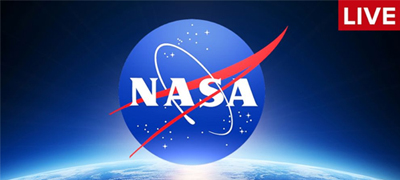
|
  

1/8/2025
WT Staff
 Got water questions? Got water questions? Give us a call at 877-52-WATER (877-529-2837), or email us at info@watertoday.ca
January 8, 2025 updated Jan 9, 2025 1105 am PST
50 years of the SDWA, is our drinking water safe yet?
Part 3: Inspired to detox
Robin Greenfield is a human on a mission. The current leg of this mission began on the Washington-Canada border, a walk of 1600 miles to arrive in Los Angeles by January 16. WT caught up with Greenfield in Santa Barbara, one hundred miles to go to LA, bone weary yet "feeling well, solid, healthy and happy". Greenfield is determined to live without inflicting harm. As separation is an illusion, we cannot poison the water without poisoning ourselves.
Chemicals of convenience
Demand for all our needs met at the push of a button has placed an incredible burden on the environment, plants and animals. Humans are part of this, there is nowhere for the toxic by-products of our lifestyle choices to go. We are all slowly dying in the backwash.
For Greenfield, there is acknowledgement of the harms, and a willingness to sit in the mess, walking and sharing the journey to find another way for a human to live. All of the objects required for the journey are contained in a push-cart, the energy of 100 watts generated by one body is all that powers this social experiment. Seeking pardon for the trespass over stolen land, Greenfield is a polite guest. Clothed in handmade, natural fiber textiles from head to toe, not even the dye in the wardrobe offers an insult to water, earth or air. We asked Robin to share his approach and relationship with water.
Pointing out what is obvious from the portholes of the International Space Station, we can't continue to use toxics and get away with no harm to ourselves and our children. "We are the water", says Greenfield, "the environment is an extension of our human ecosystems". It is an illusion that humans are separate. Every day that we continue to choose the high chemical input products, trillions of shards of microplastics and harmful compounds are rebounding right back at us, coming home to roost in all parts of our bodies.
Humans are all too capable of creating new products, rushing them out to the global marketplace before the impacts are understood. Society on the other hand, is slow to comprehend the health impacts. The most vulnerable creatures have already fallen to PFAS, phthalates, BPA and other toxins. The estimates of damage calculations have been made, the lawsuits have been initiated. Regulatory agencies will eventually enforce limits for the toxic substances, and law-makers may write new laws prohibiting the use of some chemicals in consumer goods. On the other hand, one human can make a difference in a moment, simply stop consumption of toxics.
See Part 2: Convenience is a chemical cocktail that keeps on giving, here.
We asked, what is the one thing we most urgently need to understand about our drinking water supplies:
Greenfield: "Breaking free from the delusion of the safety of bottled water. Plastic water bottles are not a solution to contaminated water, they are part of the problem."
The solution, Greenfield says, is to embrace our municipal tap water. Use a good water filter in your home, there are many good ones on the market at reasonable cost. Enjoy your water in glassware.
See more on water stewardship, here.
Next, take a look at your cleaning products, choose natural options that will not pollute the environment. Move your body, venture out on foot for restocking the household supplies. Use public transit or ride-share, determine not to run a vehicle for a one-person outing. Going to the next level, harvest rainwater and grow some of your own food. Compost your household organic waste. Collect "greywater" overflow from your sink and shower in a bucket for watering plants or install a "laundry to landscape" plumbing line to re-use greywater and conserve fresh tap water for drinking.
If after all of this, you still have some free time on your hands, you may enjoy the feel of natural fabrics and yarns as a way to fill time in the waiting room. Pick up a crochet hook or knitting needles to make some of your own attire. Comb through your closet reading labels, replacing the polyesters and microfiber items with cotton, linen, wool and other natural cellulose fabrics.
Like Robin Greenfield, one may find happiness in re-engaging with our routines in a more purposeful way. An old, forgotten path to satisfaction is found in the opposite direction of "convenience". The more we engage in our self care, meal preps, clothing and even house cleaning, we might find something even better than convenience. Let us know how this goes.
See the route and schedule for the last hundred miles of the journey, Santa Barbara to Los Angeles by Jan 16, here.
|
|
|
|
All rights reserved 2025 - WTcal - This material may not be reproduced in whole or in part and may not be distributed,
publicly performed, proxy cached or otherwise used, except with express permission.
|
| 



